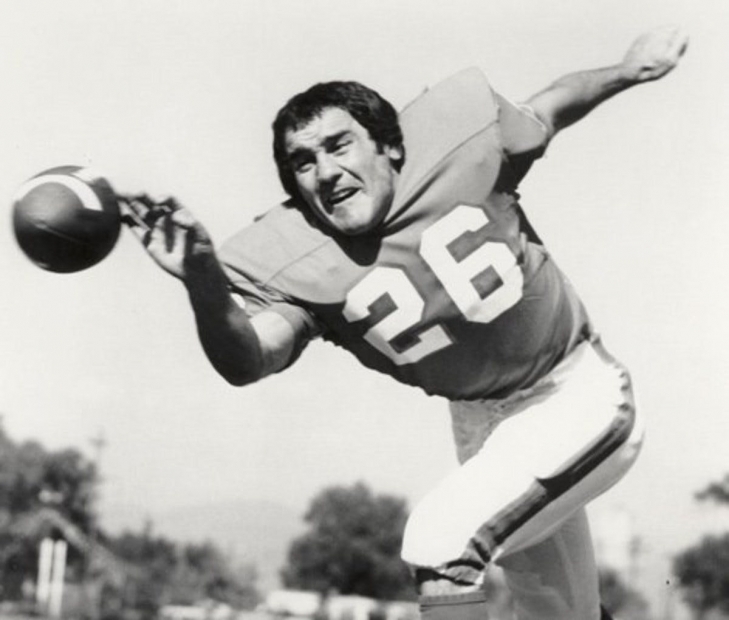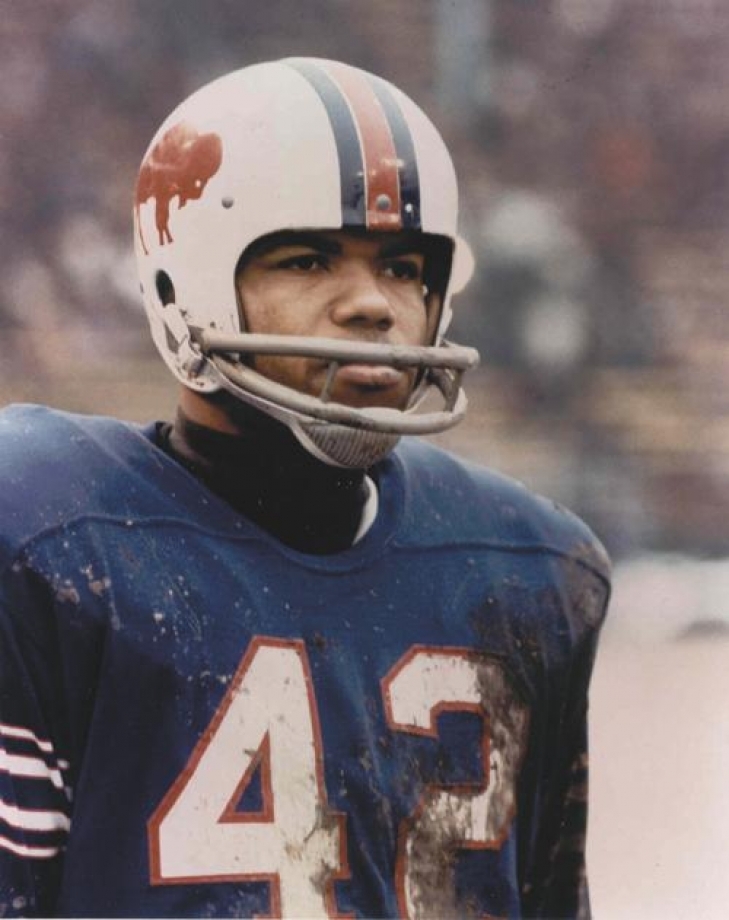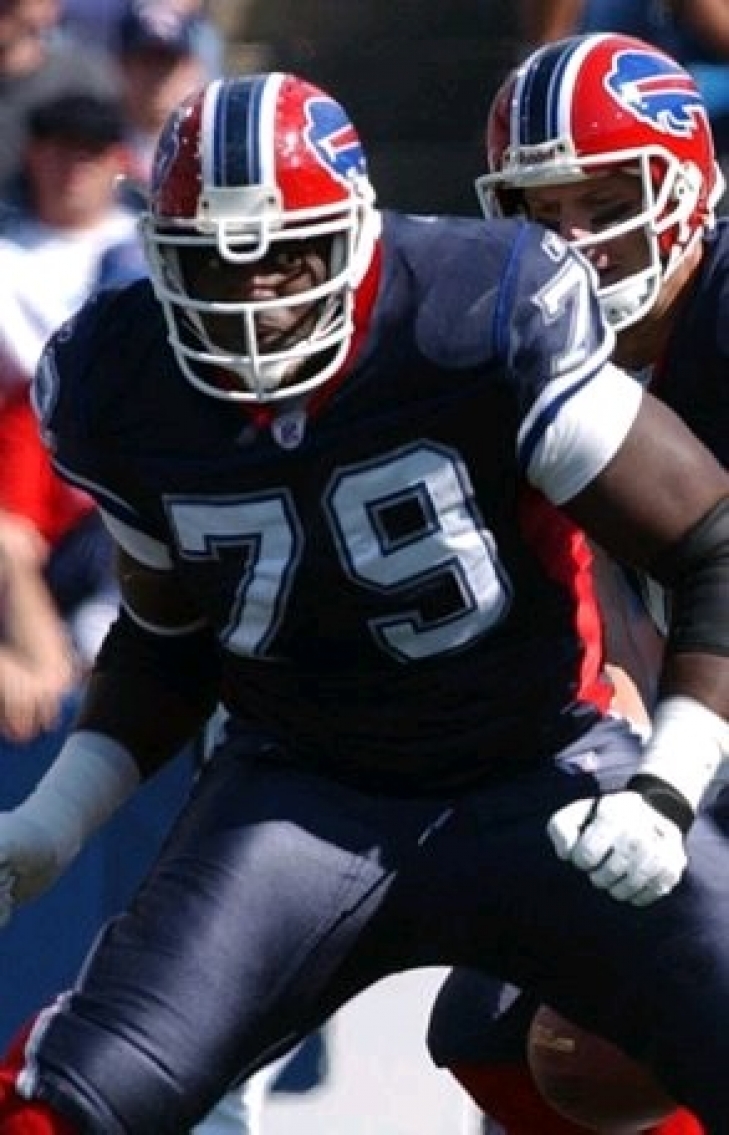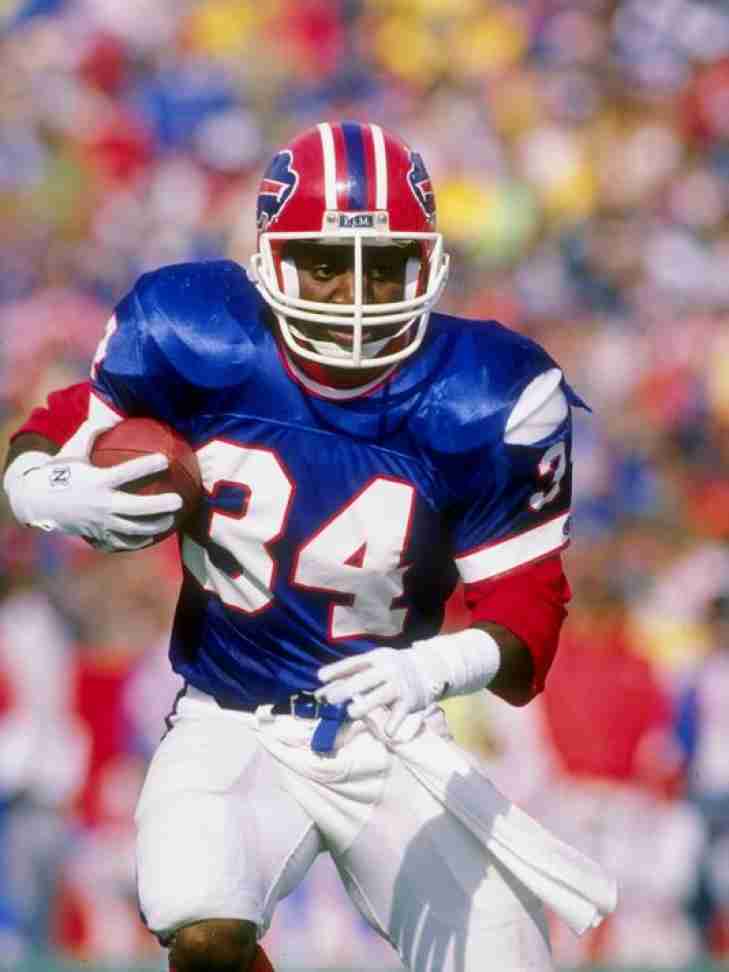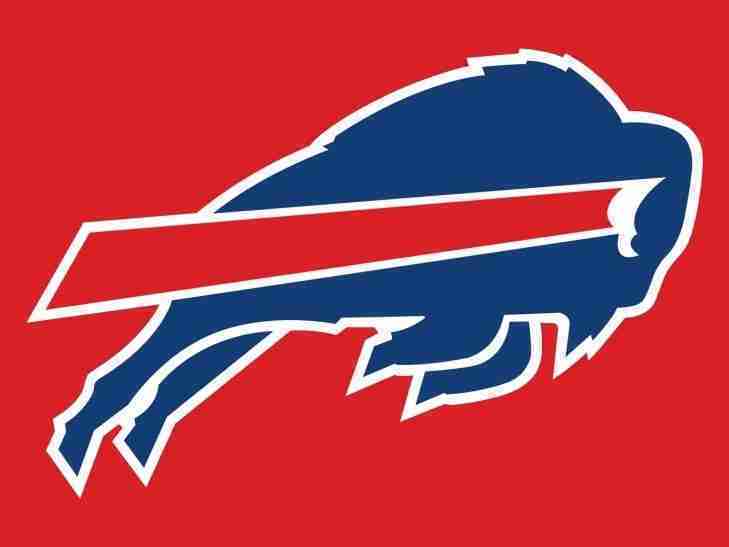33. Joe Cribbs
Arriving to Buffalo as a Second Round Pick from Auburn in 1980, Joe Cribbs had a great rookie season, rushing for 1,185 Yards and going to the Pro Bowl. Cribbs also led the league in Fumbles (16), but nevertheless it was a great start to a professional football career.
16. Cookie Gilchrist
Gilchrist was signed to (what had to be an illegal) contract by the Cleveland Browns to a contract when he was still in high school. The Browns reneged, and he would forego college to play in an amateur league in Canada before he was old enough to play in the Canadian Football League. He played there for five years, winning a Grey Cup with the Hamilton Tiger-Cats, and in 1961 he would finally play pro in the United States when he traveled around Lake Ontario to play for the Buffalo Bills of the American Football League.
244. George Saimes
Born (and died) in the most football like city on this Planet Earth (Canton, Ohio), George Saimes would sign with the Buffalo Bills in 1963 after playing collegiately at Michigan State.
242. Mike Stratton
Mike Stratton was the leader of one of the best linebacking crews in the American Football League, though his accomplishments seem to have been forgotten in the game’s folklore. A 13th Round Pick from Tennessee in 1962, Stratton fit in immediately with the Buffalo Bills, settling in at Right Linebacker, and from 1963 to 1968, he was a perennial AFL All-Star with two of those years seeing him chosen for First Team All-Pro. Stratton was a massive cog in the Bills AFL Championship wins in 1964 and 1965, and in the former, he made "the hit heard round the world" taking San Diego Chargers Running Back Keith Lincoln out of the game and changing the momentum of a game that Buffalo was losing in the first half.
191. Tom Sestak
198. Butch Byrd
We can't say enough about the AFL's Buffalo Bill defense of the 1960s, a unit that doesn't get the due that it should. This is a team that would win the 1964 and 1965 AFL Title, but most people remember the four straight failures in the Super Bowl in the early 90s.
We remember.
86. Cookie Gilchrist
Cookie Gilchrist had a bizarre road to the pro football in the United States, and dare we say had he never crossed the path of Paul Brown, the owner of the Cleveland Browns, and he could have been a household name in the 1960s.
119. Ruben Brown
Ruben Brown played the majority of his career with the Buffalo Bills, where the 1st Round Pick would be named to the All-Rookie team and followed that up with eight more seasons in Buffalo, all of which would see the Left Guard named to the Pro Bowl.
95. Cornelius Bennett
116. Jack Kemp
Jack Kemp was a late-round (17th) pick in 1957 by the Detroit Lions, but he never played a down for them and would find back-up work with the Pittsburgh Steelers that year. Kemp would later be on the taxi squad for both the San Francisco 49ers and New York Giants but would not see any action, though this would change with the formation of the American Football League.
#8 Overall, Von Miller, Buffalo Bills, #1 Defensive Lineman/Linebackers: Pass Rushers
2023 Pre-Season Rank #4, 2022 Pre-Season Rank #7, 2021 Pre-Season Rank #8, 2020 Pre-Season Rank #10. Peak Period: 2011-12/2014-16
Von Miller already has a Hall of Fame resume and might have the goods to get in on the first ballot.
A Defensive Rookie of the Year, Super Bowl winner, and Super Bowl MVP for the Denver Broncos, Miller has all the statistical requirements the Hall looks for and the name recognition that fits the word "Fame.” Miller is more of a role player for the Buffalo Bills at this stage, but he is a leader, and we are only talking about the strength of his legacy. A second Super Bowl win would do a lot, though Buffalo looks to be in a reloading year, and realistically, Miller may not be playing for much longer.
Statistically, Miller is the active leader in Sacks (123.5) and is three behind recent inductee Dwight Freeney.
The Buffalo Bills retire Thurman Thomas' number #34
As most of the regular visitors to Notinhalloffame.com are aware we are (very) slowly putting together our top 50 players of every franchise in the “Big 4” of North American sports. After that is completed we will take a look at how each organization honors their past players and executives.
As such, for us to note that last night during halftime of the Buffalo Bills home loss to the New England Patriots that the number 34 of Thurman Thomas was retired.
Along with Jim Kelly and Andre Reed, Thomas was the running portion of a potent Bills offense that went to four straight Super Bowls. The Running Back would play 12 seasons for Buffalo and was named a Pro Bowler from 1989 to 1993 and was a First Team All Pro in 1990 & 1991. He would also lead the league in Yards from Scrimmage every season from 1989 to 1992 and was named the AP MVP and Offensive Player of the Year in 1991. As a Bill he rushed for 11,938 Yards, received 4,341 more Yards and had 87 Touchdowns.
This marks the third time the Buffalo Bills retired a number. Jim Kelly’s #12 was retired in 2001 and Bruce Smith’s #78 was retired in 2016. Thomas was inducted into the Pro Football Hall of Fame in 2007.
We here at Notinhalloffame.com would like to congratulate Thurman Thomas for earning this very impressive honor.
The Buffalo Bills to retire Thurman Thomas' number
As most of the regular visitors to Notinhalloffame.com are aware we are (very) slowly putting together our top 50 players of every franchise in the “Big 4” of North American sports. After that is completed we will take a look at how each organization honors their past players and executives.
As such, it is important to us that the Buffalo Bills have announced that they will be retiring the number 34 of Thurman Thomas.
Thomas was a vital part of the AFC juggernaut that went to four straight Super Bowls from 1990 to 1993. A five time Pro Bowl and two-time First Team All Pro Selection, Thomas rushed for 11,938 Yards with 65 Touchdowns for Buffalo and he would add another 4,341 Yards Receiving with 22 Touchdown Receptions. From 1989 to 1992, he would be the league leader in Yards From Scrimmage. Thomas was named the league MVP in 1991 and e was chosen for the Pro Football Hall of Fame in 2007.
Thomas becomes the third player to have his number retired by the Bills. He joins fellow teammates Jim Kelly (12) and Bruce Smith (78).
We here at Notinhalloffame.com would like to congratulate Thurman Thomas on receiving this prestigious honor.
The Top 50 Buffalo Bills of All Time
The Buffalo Bills are the only team in NFL history to make the Super Bowl four times. Granted, the team from Western New York lost on all four occasions but over time the accomplishments involved to get there are celebrated more and more.
At present, this list reflects accomplishments up to the end of the 2015 season.
The list is based on traditional metrics advanced metrics, length of service, popularity, and post season performance.
The complete list can be found here, but for those who are curious immediately as to who the top five are, we’ll grant that immediately:
1. Bruce Smith
2. Thurman Thomas
3. Jim Kelly
4. Andre Reed
5. O.J. Simpson
Which team are we working on next?
We will turn our attention to the diamond and the Washington Nationals.




